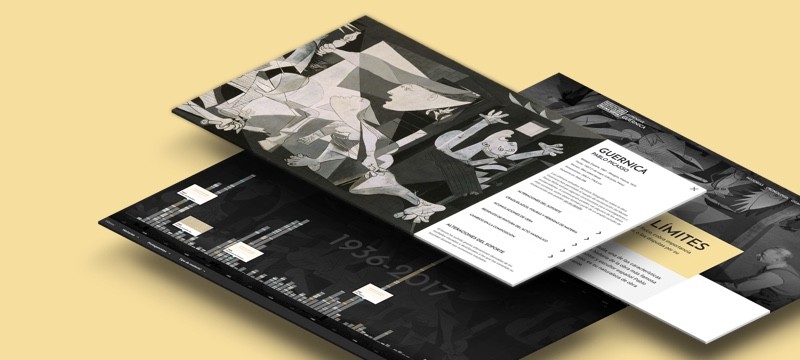Picasso´s Guernica, a tour organised by the Spanish Refugee Relief Campaign, 1939
The painting Guernica and the prints The Dream and Lie of Franco I and II, a show of support for the Spanish Republic immersed in the Civil War, were works which granted Pablo Picasso greater political visibility. Yet the people who, even before they saw these pieces in the Spanish Pavilion at the Paris World’s Fair in 1937, were working with different aid organisations to help the Spanish people were already large in number; organisations, such as the North American Committee to Aid Spanish Democracy, backed the volition of the artist in deploying these works for solidarity and fund-raising purposes. In this context, on 1 May 1939 Guernica was transferred to New York, along with a series of preparatory drawings and studies, to begin a tour which took in four US cities.
The conflict which submerged Spanish civilians in war merited the attention of numerous international associations, which, since the autumn of 1936, had thrown themselves into the management and supply of material and economic aid primarily destined for women, children and health care. To this effect, the mobilisation and response organised in multiple associations in the USA was remarkable, particularly in view of the array of activities they organised to raise funds, including balls, concerts, charity dinners, food and clothing collections, jumble sales and rallies.
In coordination with different international aid organisations, in favour of democracy in Spain and against fascism — a stage on which Juan Larrea played a key role as a representative and managed the funds received — and at the end of the exhibition at Whitechapel Gallery in London, in late January 1939, the Spanish Refugee Relief Campaign (SRRC) organised the delivery of Guernica to New York on 1 May 1939. Thus the painting would be sure to leave Europe, fraught with pre-war tension, behind to take part in a Picasso exhibition being arranged at New York’s Museum of Modern Art (MoMA) that autumn.
Nonetheless, the time that elapsed in this interim period was utilised by the SRRC to organise an exhibition with Guernica and its preparatory drawings, inserting it into its general programme of activities comprising charity dinners, raffles, exhibitions, balls, concerts, and rallies. In barely two months, the SRRC managed to seal an itinerary that would see the painting displayed in museums and galleries in four US cities: the Valentine Gallery in New York, San Francisco’s Museum of Modern Art, the Stendahl Galleries, Los Angeles, and the Arts Club of Chicago.
The ample documentation generated by the circulating exhibition reflected the pressing need to confirm the tour’s schedule, and its set-up, the fee each venue would have to pay the SRRC as payment for costs, the price of catalogues, and the number of copies sold. Moreover, the vast correspondence provided information on the associations and people that, in a private capacity, were involved and participated in the tour, for instance the actors’ guild the Motion Pictures Committee of Hollywood, the Medical Bureau and North American Committee to Aid Spanish Democracy, Spanish Intellectual Aid, US President Franklin D. Roosvelt and his wife, the mayor of New York, Fiorello H. La Guardia, and artists, writers and collectors. The correspondence also provided information on those institutions which, despite being interested in the exhibition, finally could not house it, in addition to those that had to turn it down over agenda issues, for instance the Canadian Committee to Aid Spanish Refugees, the Cleveland Museum of Art, Wadsworth Atheneum in Connecticut and the Philadelphia Museum, among others. Although the funds raised showed that the exhibition’s reception had been more low-key than expected, it did mean the symbolic and political value of the painting gained recognition and had been disseminated before it was interspersed in the museum narrative developed at MoMA.




